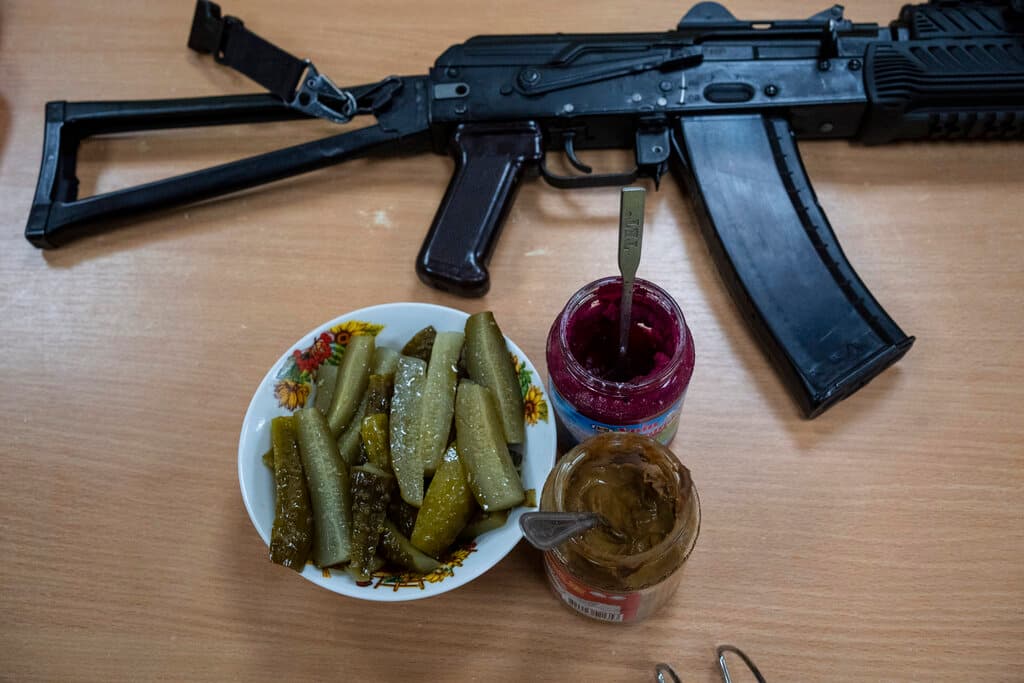Russia Warning It Is Prepared To Use Food as a Weapon, Stirring the Ghosts of the Holodomor
Soviet propaganda depicted peasants as counterrevolutionaries who hoarded food as their socialist comrades starved –– and so they became targets.

Old tactics, it seems, die hard. The allusion — threat, really — by the deputy director of Russia’s Security Council, Dmitry Medvedev, to Moscow’s weaponization of food in its war in Ukraine certainly ups the ante.
“It turns out food is our weapon,” Mr. Medvedev warned on his Telegram channel Friday. “Quiet but ominous.” Referring to Russia’s $37 billion in agricultural exports, Mr. Medvedev continued: “We will supply food and crops only to our friends.”
What makes this threat so ominous is the history. For in the years 1932 and 1933, a famine swept across the Soviet Union. It began from collectivization, when millions of peasants were forced off their land and made to join state farms. It was exacerbated when, in 1932, the Soviet Politburo adopted a series of measures that deepened the deprivation in the Ukrainian countryside.
The state demanded grain and all available foods. Soviet propaganda depicted peasants as counterrevolutionaries who hoarded food as their socialist comrades starved –– and so they became targets. Party activists entered peasant households and took everything edible. A cordon was drawn around the Ukrainian republic to prevent escape. The result was catastrophic: at least 5 million persons perished across the Soviet Union. Among them, some 4 million Ukrainians who had been deliberately deprived of food.
That is the context for Mr. Medvedev’s warning that Russia will “sell both for rubles and for their national currency in agreed proportions” and will not supply foodstuffs to its “enemies” and will not purchase from them, either. In 2014 Moscow imposed a ban on importing selected agricultural products from Europe and the West. That list, said Mr. Medvedev, “can also be expanded.”
Reference to the Kremlin’s enemies most immediately implicates Ukraine, Europe, and America. Yet it could also extend to shore up global alliances. Africa, say, is a net importer of wheat, of which some 30 percent is from Russia. For Egypt, the world’s largest wheat importer, that figure is closer to 80 percent. The costs of siding against Moscow would be high.
In Ukraine, Russia has also been targeting the country’s agricultural infrastructure. Such attacks have been confirmed by the key agriculture officials of both Europe and Ukraine, respectively Janusz Wojciechowski and Roman Leshchenko. “The soil is used as a weapon against its own people,” Mr. Wojciechowski said while discussing food security last week.
Ukraine’s soil is used against its people and, by extension, those who rely on it. Together with Russia, Ukraine is a top exporter of wheat, as well as corn, barley, and rye. In 2020, it exported roughly 18 million metric tons of wheat out of a global harvest of 24 metric tons, making it the world’s fifth-largest exporter. Essential customers include Yemen, Lebanon, Nigeria, Libya, and Ethiopia, which is also gripped by a severe food crisis.
When President Putin invaded Ukraine, he may not have intended to weaponize food and risk global shortages. Yet Mr. Medvedev’s remarks suggest he is willing to do so now if it helps to advance his aim of a new geopolitical order.
In the 1930s, the peasants were the counterrevolutionaries. Today that could well be anyone on the opposite side of the Kremlin. “It turns out that we will eat breakfast by ourselves,” Mr. Medvedev opined at the conclusion of his Telegram exposé. “Perhaps we will share lunch with friends, and we will not give dinner to the enemies. We will manage.”

